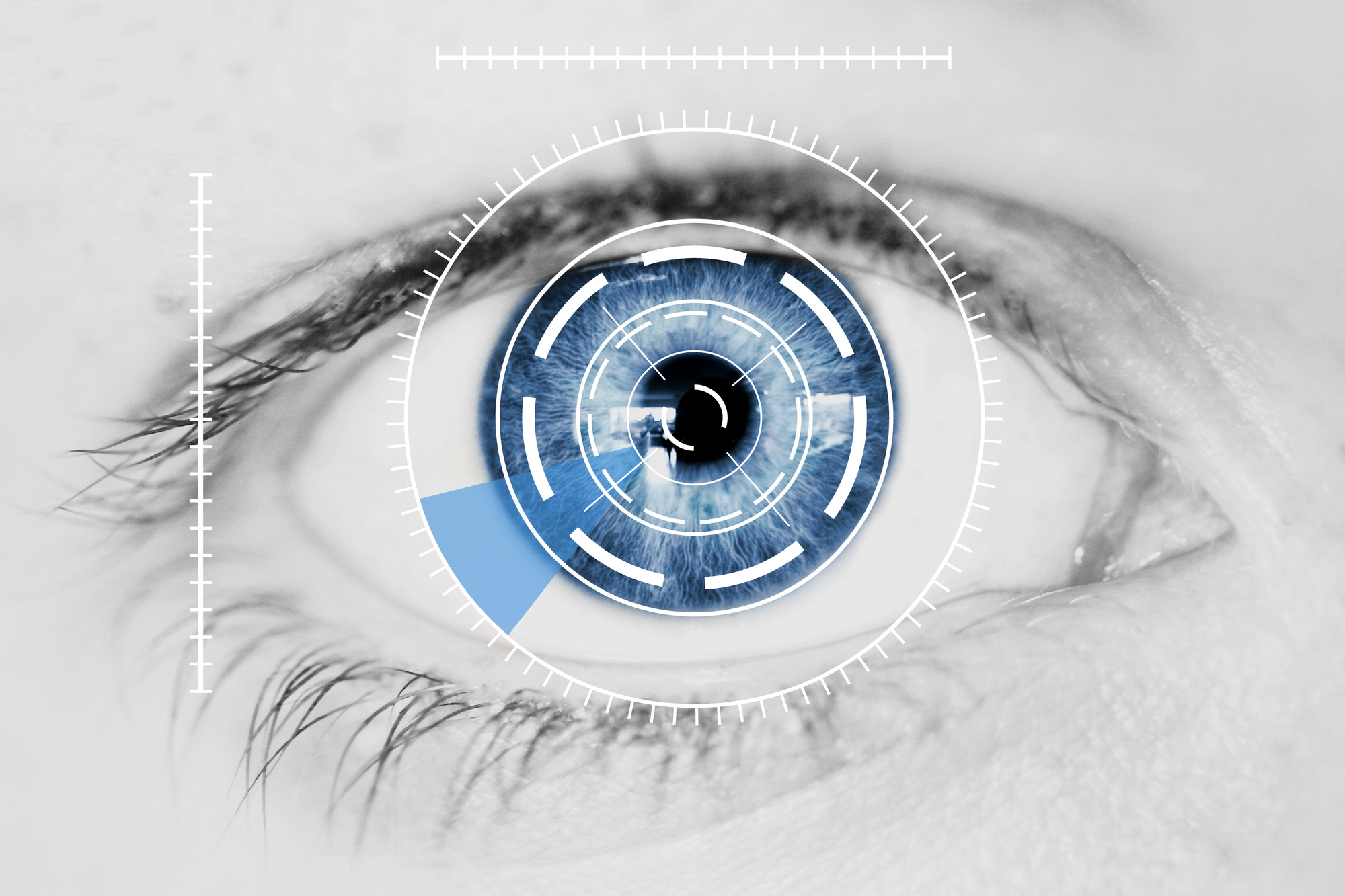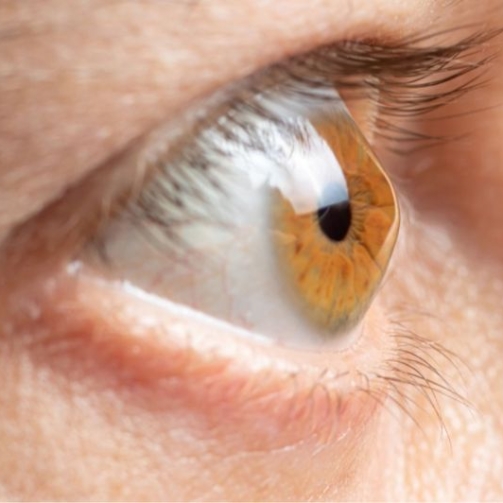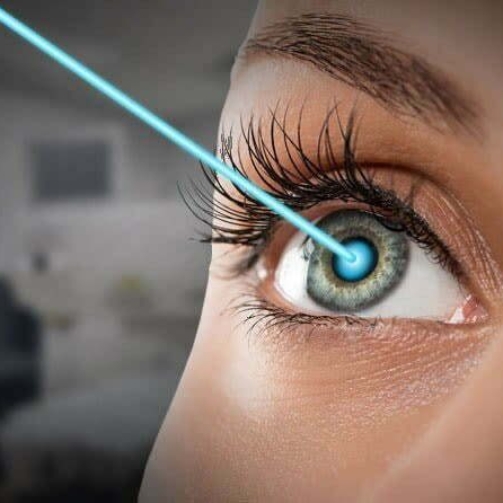Vision defects and refractive problems are considered one of the most common eye diseases throughout the world, and in every home there is certainly someone afflicted with them. In the context of this, it is necessary to shed light on methods of treating vision defects that develop continuously and rapidly, Therefore, today we will talk about refractive vision problems in general and lens implantation to treat vision defects in particular, reviewing the most important topics in this context, in terms of advantages and disadvantages and the stages of implanting these lenses in detail at the Dr. Nour al-Din al-Hussein Center for Ophthalmology and Surgery and a lot of valuable information.
We hope for a good follow-up from the Dr. Nour El-Din Al-Hussein Center.
What is the process of implanting lenses to treat vision defects?
This lens implantation process is known as one of the simplest surgical procedures used to treat refractive vision problems that include farsightedness, shortsightedness, astigmatism, and others. High-precision and transparent artificial lenses are used to be implanted completely behind the iris and in front of the cornea to correct the focus of the light ray on the retina to enhance the quality of… Vision, and the surgical incision is often so precise that it cannot be seen by the human eye.
Advantages of lens implantation to treat vision problems
The essential advantage taken for granted when implanting lenses to treat visual defects is significantly improving the quality of vision and removing all annoying effects in it. In addition to that, there are other advantages that these lenses give to patients, which include:
- Improved night vision quality and driving ability in low light conditions.
- Reduce annoying glare of lights.
- Dispense with glasses and contact lenses.
- There is no need for constant care, as it is not susceptible to contamination as it is naturally located inside the eye.
- It does not cause any feeling of discomfort or the presence of a foreign body in the patient’s eye.
- It does not need to be changed or replaced over many years, as it is not affected by the passage of time at all.
Defects of eye lenses to treat vision problems
While implanting lenses to treat visual defects is one of the most successful medical procedures at Dr. Nour El-Din Al-Hussein Center, thanks to God, this procedure can carry some side effects and potential risks in other eye centers, including:
- The possibility of bacterial infection and eye infections.
- Retinal hemorrhage.
- Not achieving ideal vision quality.
- Slight changes in the accuracy and contrast of the colors being perceived.
- Photosensitivity in bright light conditions.
- Inflammation of the area surrounding the implanted lens.
- The implanted lens rubs against the cornea, causing severe irritation.
- Redness and severe itching in the eye.
- Retinal detachment is a very rare condition.
- The implanted lens shifts out of its location, requiring a new operation.
Patients who are candidates for lens implantation to treat refractive vision defects
Not every refractive vision problem requires lens implantation to treat vision defects. Quite the contrary, most cases with mild degrees do not require this procedure. As for patients for whom lens implantation becomes a therapeutic necessity, they are:
- Patients with severe cataracts in whom the lens of the eye becomes cloudy leads to severe vision impairment, and therefore the cataract-affected lens is replaced with a new lens with high transparency.
- Patients with glaucoma, or glaucoma, is a form of glaucoma in which eye pressure is very high and lenses are the only solution to treat it.
- Cases of severe refractive vision defects, whether long-sighted (hyperopia) or short-sighted (myopia), where high degrees cannot be controlled with glasses and prescription lenses, and implanted lenses are the best treatment option.
- Advanced astigmatism, in which the curvatures and distortions of the outer surface of the cornea are very severe and therefore cannot be corrected using traditional methods.
- Lasik and similar treatments fail and the eye does not respond to them, and thus the patient and his doctor are left with no treatment option but to implant lenses.
- Partial or complete vision loss resulting from problems with the lens of the eye or other pathological conditions that respond therapeutically to lens implantation.
- Patients with keratoconus.
Types of lens implant surgery to treat vision problems
If you think that implanting lenses to treat vision defects is a procedure that relies on a single mechanism and fixed method, then this information is wrong, because this therapeutic procedure is divided into several types, each of which has a different technique, type of lenses, and treatment protocol that differs from others, and the person is considered the only one capable of choosing the most appropriate procedure for the disease. He is Dr. Nour El-Din Al-Hussein, who has decades of experience, and these types include the following:
- Contact lens implantation “Phakic IOL“: A famous treatment procedure in which an artificial lens is implanted inside the patient’s eye without the need to remove the original lens. This method is adopted to treat refractive vision problems such as farsightedness and myopia in severe cases that cannot be controlled with glasses or lenses. Medical lenses without removing the original lens, including: Iris Fixed IOL, preoptic lenses, ICL, and toric ICL lenses.
- Intraocular Lens Implantation (IOLs): In this treatment method, the original lens, which is damaged due to cataracts or refractive vision problems, is replaced with a highly transparent artificial lens called IOLs.
- Phakic Intraocular Lenses (PIOLs): These lenses are called phakic lenses because they adhere to the area between the natural lens of the eye and the iris. They have a unique design that prevents interaction with the natural lens and are used to treat cases of farsightedness and nearsightedness.
- Implantable Collamer Lenses (ICLs): These lenses are particularly suitable for patients with farsightedness or nearsightedness who are not suitable for laser vision correction. In this procedure, the collamer lenses are implanted between the natural lens and the iris.
- Refractive Lens Exchange (RLE): In this treatment procedure, the natural lens of the eye is removed and replaced with an ideal artificial lens to correct vision problems.
- Photorefractive Keratectomy (PRK): Unlike the previous method, this type of procedure involves removing a small part of the corneal surface. After that, refractive vision defects can be corrected using laser technology.
Types of lenses used to treat refractive vision defects
There are also several types of lens implants to treat vision defects. There are different types of lenses used in this medical procedure, and in the same context, each type of these lenses is suitable for a specific case of refractive vision problems. Here are the most prominent types of high-quality lenses that can be implanted in the eye:
- Monofocal Lenses: These lenses are designed to correct vision at a specific distance, making them suitable for issues such as difficulty with driving or reading.
- Bifocal Lenses: These lenses can correct vision at two different distances within the same eye. They are suitable for patients who have both near and distance vision problems, such as difficulties with reading and driving.
- Multifocal Lenses: These lenses can correct multiple points and various distances, effectively eliminating the need for eyeglasses.
- Foldable Lenses: These are flexible lenses that can be easily folded and inserted through a very fine surgical incision in the eye. This helps speed up the wound healing process and reduces associated pain.
- Colored lenses: These lenses work with the same previous functions, which depend on correcting one or more dimensions and treating refractive vision problems, but they carry an additional advantage, which is changing the color of the eye because they are colored lenses and thus support the patient’s aesthetic appearance and treat his health condition as well.
- Accommodating Lenses: These are the most advanced lenses, closely resembling the natural lens of the eye. They mimic the movement of the original lens and match all its specifications, thereby improving the eye’s accommodation for various distances and addressing vision problems.
Stages of the lens implantation process to treat vision defects
If you are planning to undergo a lens implantation operation or you have a very close date to perform this operation, come with us in a plan to treat a patient through lens implantation to treat vision defects under the supervision of Dr. Nour El-Din Al-Hussein. Let us explore my experience with treating vision defects with lenses and highlight the most important detailed steps. Follow along with us.
·Before the operation
Through periodic eye examination visits at Dr. Nour El-Din Al-Hussein Center, periodic eye examinations are performed to evaluate the development of refractive vision defects and their degrees.
If these refractive problems develop to a significant degree, the patient is then referred for lens implantation.
Before the operation, it is recommended to completely abstain from wearing contact lenses for several days and not to use any cosmetics, creams or perfumes before and after the operation.
The stage of lens implantation to treat vision problems
We now come to the date of the lens implantation procedure to actually treat vision defects. On the day of the operation, the patient is prepared to enter the operating room by wearing sterile clothes and coverings for the head and feet, and disinfecting the hands and face with specialized materials.
After that, the steps for implanting lenses in the eye begin as follows:
- Performing local anesthesia through anesthetic eye drops so that the patient does not feel any pain or discomfort during the procedure.
- Anterior keratoplasty is performed to access the eye’s natural lens using a surgical microscope.
- Separating the eye’s natural lens from the surrounding tissues and vessels and removing it precisely.
- After removing the natural lens, the artificial lens is implanted in the same place by inserting the folded, flexible lens into the fine incision. Once inside, it unfolds and takes its natural shape in a few seconds.
- After the new lens is installed in its correct place, the surgical incision is closed.
·After the operation
After the operation is completed, the patient is monitored for several hours and then discharged from the center to enter the recovery phase, which lasts for several weeks until the wound gradually heals.
The patient must visit Dr. Nour El-Din Al-Hussein Center periodically to check on his improved vision and monitor the recovery stage.
The most important instructions after the operation of implanting lenses in the eye
The doctor recommends to patients who have undergone lens implantation to treat vision defects a set of necessary instructions and advice that contribute to shortening the recovery period and reducing side effects resulting from lack of attention to eye health. These instructions can be clarified according to the following points:
- Commitment to applying the prescribed eye drops on time to prevent inflammation or irritation.
- Get enough rest after the procedure and stay away from electronic devices and heavy work.
- Limit touching, massaging, rubbing, or pressure on the eyes.
- Avoid going out in the afternoon and being exposed to direct sunlight, and wear sunglasses when necessary.
- Visit an ophthalmologist at the specified times, follow up on developments with him, and inform him of any abnormal changes, pain, or symptoms.
- Stay away from physical activities that require great effort and hardship, such as lifting weights, during the first weeks.
- Maintain a healthy diet and drink plenty of water daily.
- Avoid swimming during the first weeks after the operation because the disinfectants and chemicals found in swimming pools directly affect the implanted lens.
Specifications of implantable lenses in the eye
Despite the many types of lenses implanted in the eye, they all share common factors that make their general specifications almost the same. Among these specifications we mention to you:
- The ability to correct one or more refractive vision problems.
- Suitable for patients with high degrees of vision problems.
- They all require a surgical incision to insert and hold them in place.
- It is made of collamer, a polymeric material that is characterized by its high flexibility as a result of it containing a large amount of water to enhance compatibility with vital tissues and oxygen permeability to the eye.
- It preserves the vital tissue of the cornea in all its layers.
- It guarantees rapid improvement of vision and clear positive differences.
The best doctor for treating vision problems in Egypt
If you were told that there is an ophthalmologist who has performed 21,000 lens implant operations to treat vision defects and all of them were successful, God willing, and that he is also a professor of ophthalmology at the Egyptian Ain Shams University, which produces the elite doctors in the Middle East, would you hesitate to entrust him to treat your eyes? Of course not, because he is trustworthy without seeing him. This doctor is Dr. Nour al-Din al-Hussein, who has a good biography and outstanding achievements, Fellow of the Royal College of Surgeons in England, Fellow of the International Council and the European and Egyptian Societies of Ophthalmology and Ophthalmology, and many other top job titles he has obtained, but all of them are alleviated when we see his friendly relationship with his patients.
Dr. Nour El-Din’s relationship with his patients was never a doctor-patient relationship, but rather a brotherly relationship in which the patient complained of his pain and Dr. Nour El-Din sought to treat him, with God’s help, using the best techniques and by establishing thoughtful protocols, the professionalism of which is attested to by his scientific research and his many academic publications.
Accordingly, Dr. Nour El-Din won the title of the best doctor for treating vision problems inside and outside Egypt in word and deed, and he became an example for every doctor around the world.
The most prominent questions about implanting lenses in the eye to treat vision problems
In addition to the large amount of information that we have learned about regarding the implantation of lenses to treat vision defects at the Dr. Nour El-Din Al-Hussein Center, there are side details that patients constantly ask about, and we will answer them in this paragraph.
-When does vision quality improve after lens implantation?
The time it takes for the results of this procedure to appear varies from one patient to another. But in general, vision improvement begins the day after the operation. The healing period continues for several weeks until the final result is achieved.
-What is the appropriate age for lens implantation to treat vision defects?
Dr. Nour El-Din Al-Hussein prefers that the patient’s age exceed 21 years. This is because the degree of refractive vision defects changes significantly before this age. But after the age of 18, the degrees of vision begin to stabilize, and at the age of 21, we will face almost constant degrees, God willing.
-Does the shape of the eye change after the lens is implanted in it?
No, the lens implanted in the eye does not cause any change in its shape or appearance. The presence of the lens can only be detected by an ophthalmologist and an eye examination microscope.
-What is the success rate of lens implantation in the eye?
By the grace of God, the success rate of implanting lenses to treat visual defects at Dr. Nour El-Din Al-Hussein Center is 100%. This is the result of the doctor’s high competence, the sophistication of the tools used, and the accuracy in choosing the type of lens and determining its measurements.
In conclusion, this was the most important information about the procedure of lens implantation to treat vision defects, the most common therapeutic procedure. We learned with you about the concept of lens implantation, its advantages and disadvantages, and the stages of this simple procedure. We also referred to the best eye doctor and corrector of vision problems in Egypt, Dr. Nour El-Din Al-Hussein, hoping To see everything beautiful with your own eyes.





